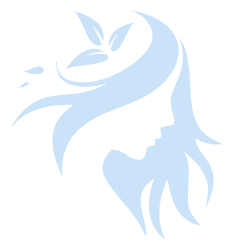Healthy hair simply looks good. The healthier your scalp and hair follicles, the better your hair will look. If you’re starting to experience some hair loss and a general decline in the overall health of your hair and scalp, it has probably been deteriorating for a while, and you’re only now seeing the effects.
Hair grows in a cycle of three phases. Each individual hair is in a growth phase (anagen phase) for 2-6 years, before it enters a transition phase (catagen phase) for 1-2 weeks, and then a resting phase (telogen phase) for 5-6 weeks. After that, the hair dies and falls out. Then the follicle returns to the growth phase, and a new hair begins to grow.
In normal, healthy adults, the approximate percentages of hairs in these three different phases are:
· 84% in the growth (anagen) phase
· 0-1% in the transition (catagen) phase
· 14-15% in the resting (telogen) phase
Returning your hair follicles to the anagen growth cycle is the objective of any plan to regrow healthier hair.
DHT Effects On the Hair Follicle
================================
The medical term for hair loss is alopecia. This is defined as a state where 20% or more of a person’s hairs are in the telogen (resting) phase.
In cases of alopecia, the hair growth cycle has been altered so that the anagen (growth) phase is shortened. This results in an increased percentage of hairs in the catagen and telogen phases.
The enzyme conversion of testosterone creates a compound called Di-Hydro Testosterone (DHT). The effect of DHT on the hair follicles and oil glands of the scalp can be detrimental to the anagen phase that you want to lengthen.
In areas of hair thinning or loss, the follicles have more sites to which DHT can attach, and more DHT at those sites. This buildup of DHT near the follicles can shorten their growth phase and increase the numbers of hairs in the transition and resting phases. A continuation in this buildup of DHT will actually shrink the hair follicles, which causes their hairs to become thinner, weaker, and look less healthy.
Reality Check: No product known today will grow a hair without a viable hair follicle. Only a healthy hair follicle can grow a hair.
A healthy hair follicle can resist the negative effects of DHT buildup and continue in a normal growth cycle longer than an unhealthy one can. Hair care products that seek to lessen DHT work by binding to the same sites on the hair follicle to which DHT attaches. This blocks the abnormal response of the follicle to DHT, so it blocks the harm that is causing the weakening and loss of the hair.
The nutritional supplements recommended by a naturopathic physician work by helping the body to normalize its hormone levels, while increasing the circulation of nutrients and elimination of waste products from the hair follicle. This increases the strength of the follicle and protects it from further damage.
The amounts of the conversion enzymes that create DHT from testosterone, as well as the amounts of testosterone or cortisol, are thought to be genetically determined. This is why some people tend to have less of a problem with DHT than others.
The good news is that a person’s genetic expression (i.e., how their body is now) can be changed by what that person does in the upcoming weeks, months, and years, as well as how they do it. With advances in the scientific understandings of these physical events, you can arm yourself with the right information and learn to make the changes necessary to stop a hair loss problem. We’ll next explain how.
Hair Loss
=========
A variety of health conditions and environmental factors can cause hair loss. Likewise, many different approaches can be taken to stop hair loss and even grow hair back.
Certainly, having great hair is important to us, but the body has many other important things to do on a continuous basis. Some are higher priorities than maintaining lustrous hair — things like breathing, eliminating waste, absorbing food, protecting itself from infections, fleeing from danger, and so forth. If the body has a limited budget of energy, nutrients, and strength, it starts to redirect its resources to the tasks it deems most important. This is fortunate for us.
If stressful events occur to lower that ‘budget,’ the body may find it necessary to prioritize other functions more highly than hair growth.
For example, if a person undergoes a series of radiation treatments to kill cancer, the treatments incur a major stress on the body. The body’s first priority then becomes to live and breathe to grow nice hair another day. As a result, hair loss is often the consequence of radiation treatments. Hair regrowth after this type of trauma is possible, however, depending on the state of the hair follicles and the person’s overall capacity to return to health. Naturopathic doctors call this their “vital force.”



